Contending for the Faith
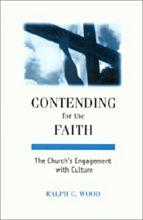
In his insightful work, Contending for the Faith, Ralph Wood writes, “H. Richard Niebuhr once said that it is much easier to declare what we oppose than what we propose, and yet that the latter is the far more important task. It’s easy enough to condemn and point out faults, but another thing entirely to remedy and to edify. Niebuhr was making a Christian no less than a common-sense claim. The Gospel is not fundamentally a word of negation, not even the negation of our own cultural sickness unto death. The Gospel is God’s vehement No to the No of humanity’s sinfulness, and thus God’s great glad Yes to his whole creation” (105).
As one who is both Reformed and Presbyterian, I find this to be an accurate critique of the very air which Reformed Presbyterians all too readily imbibe and then live out with inebriated fervor. We are so quick to critique, so ready to condemn the faults and errors of others as the self-appointed guardians of the Bible, that we end up neglecting the very Gospel we claim to defend. The truth which is to be adorned becomes smothered under a heavy blanket of censoriousness.
As one who has regretfully evidenced and experienced such a spirit, Niebuhr’s observation provides the remedy. As Reformed Presbyterian Christians, it is vitally important for us to be declaring who and what we are for, instead of so eagerly decrying those we believe to be in the wrong. Certainly there is a time and place for declaring error to be error, but what happens when that is your default disposition? You end up with curmudgeonly Christians who cannot see the wider world which God has made and redeemed.
Perhaps part of the problem that Reformed Presbys have is an inevitable result of the Reformation. After all, the likes of Martin Luther, John Calvin and John Knox were embroiled in a fight against ecclesiastical entities, and therefore had to declare wherein they disagreed with their opposition. That is our history. Furthermore, as those who have largely dieted upon Paul’s polemical epistles, is it any wonder, then, that we engage the argument with such ease? Not if we are honest.
Therefore, let us be giving ourselves all the more to the suppression of our critical spirit, and the cultivation of a humble one. Let us be about declaring Christ our King, and serving in the glorious new kingdom that has been inaugurated. For as we do so, I suspect we will be too busy being part of the solution to be delineating the shortcomings of others.
The Church’s Mission from the Empty Tomb
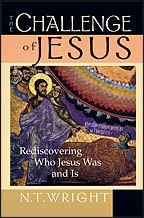
“The answer to the challenge of postmodernism is not to run back tearfully into the arms of modernism. It is to hear in postmodernity God’s judgment on the follies and failings, the sheer selfish arrogance, of modernity and to look and pray and work for the resurrection into God’s new world out beyond. We live at a great cultural turning point; Christian mission in the postmodern world must be the means of the church grasping the initiative and enabling our world to turn the corner in the right direction.
We must therefore get used to a mission that includes living the true Christian praxis. Christian praxis consists in the love of God in Christ being poured out in us and through us. If this is truly happening, it is not damaged by postmodern critique, the hermeneutic of suspicion. We must get used to telling the story of God, Israel, Jesus and the world as the true metanarrative, the story of healing and self-giving love. We must get used to living as those who have truly died and risen with Christ so that our self, having been thoroughly deconstructed, can be put back together, not by the agendas that the world presses upon us but by God’s Spirit.” – N.T. Wright, The Challenge of Jesus
The Church-Friendly Family

Recently I have been listening to the lectures delivered by Randy Booth and Rich Lusk at last year’s Family Advance in Sandestin, FL, and cannot recommend them highly enough. They are excellent, and are well worth your consumption sooner than later. I would hope that all the families at St. Mark would take some time in the coming months to listen to them, as they so thoroughly define the identity and principles we are striving for as a congregation.
Holy Week
This Sunday is the beginning of Holy Week. Palm Sunday, also known as Passion Sunday, commemorates Jesus entry into Jerusalem. Most of our bibles label this portion of scripture as the “triumphal entry”, (a term we are accustomed to hearing) but really this is somewhat of a misnomer. The cries of “Hosanna” at the beginning of the week turn into cries of “Crucify him” by the end of the week. Jesus enters Jerusalem at last to suffer and die. The scene is full of irony. There is a sense in which Jesus is the King which the crowd proclaims, but His kingship does not meet the expectations of the day. A focus upon the humiliation of Christ and Golgotha is very appropriate, and rightly leads us to wonder over the generosity of God’s condescension in the face of human depravity, and the marvels of His grace in the redemption of rebellious humanity.
Maundy Thursday is the first day of the Triduum (pronounced TRID-oo-um). This is a Latin term simply meaning, “three days,” and consists of Maundy Thursday, Good Friday, and Holy Saturday. The word “Maundy” is derived from the Latin mandatum, meaning “mandate” or “command.” At the last supper Jesus gave the disciples a mandatum novum: a “new commandment I give to you, that you love one another” (John 13:34). Also during the upper room scene, Jesus washed the disciples feet and celebrated a meal with them. Foot-washing has long been practiced on Maundy Thursday in varying groups in the church, including the Brethren and Seventh Day Adventists. The climax of the worship on this day is the celebration of the Lord’s Supper. While it might seem to be appropriate for the Lord’s Supper on this evening to have somewhat of a somber tone, it is more accurate for the meal to be one of great celebration. Jesus establishes a new meal, and the essence of this meal is reflected in the table appearances He makes to his followers after the resurrection. Jesus is recognized in the breaking of the bread, so we read the resurrection back into the upper room. “We praise God for taking what might have been nothing more than a sad farewell of teacher and disciples and transforming it into a way of revealing the presence of the Risen One. We praise God for turning an occasion for mourning into an occasion of profound gratitude. On Holy Thursday the church lifts up the fist of faith and shakes it defiantly at every potential evildoer, saying, ‘We have this meal to strengthen and sustain us. It is the reliable promise of divine power and presence always in our midst. We will fear no evil, because our God submits to no destroyer, not even death. Thanks be to God for the gift of this meal!’ Only when we have shouted defiantly at the hosts of evil are we ready to confront them more directly; and so the Holy Thursday service proceeds to recall the passion of the Lord and thus to prepare for Friday” (Stookey, 95*).
Good Friday. What’s “good” about it? The term “Good Friday” may be a corruption of the English phrase “God’s Friday,” but can still be considered good because the events of the day are the working out and fulfillment of the perfect plan of God. It is certainly a day of great solemnity, but we should not treat it as a funeral service for Jesus. Although it is a time for serious contemplation of the saving work of Christ and what He has done for the Church and for us individually as believers, it also affords the opportunity to “consider how best we can present to the world the redemption of God, both by word and deed” (Stookey, 99-100*). The occasion of Calvary pictures the great condescension of the love of God, and not only for His people, but for all of creation. One of the services commonly associated with Good Friday is the Tenebrae, or Service of Darkness. Tenebrae, which means “darkness” or “shadows,” is a Holy Week Devotion dating back to at least the seventh or eighth century A.D. It is characterized by the successive extinguishing of candles as the service progresses, symbolizing the darkness that overcame the world as a result of the Crucifixion of our Lord.
Holy Saturday has been called The Great Vigil since antiquity. There a number of variations to this day and how it is celebrated. A service could begin is at dusk on Saturday, or before daybreak on Easter morning—hence the practice of sunrise services on Easter. Others hold the service at a later hour on Saturday, so that it ends after midnight on Sunday. The primary component is for the service begin in virtual darkness. Four basic parts are typically found in the celebration of this day. 1) Service of Light—candles are central, and, among many things, pictures the light leading out of the darkness in the history of Israel, and now in Christ. 2) Service of the Word—readings that cover the scope of salvation history from creation to the restoration of Israel from exile, and the major themes of Lent are revisited. 3) Baptism and Reaffirmation—typically adult converts, after having gone through Lent as a time of instruction and discipleship, would be baptized. All present would recite the Apostles’ Creed, reaffirming the faith into which they had also been baptized. 4) Eucharist—a joyful celebration of the Lord’s Supper, and for those who have fasted in preparation, a real “breaking fast” as they enjoy this meal prepared by the Risen Savior. The various components can constitute a single service, or be broken up into various services. The keeping of Holy Saturday has remained in Roman Catholic and Anglican churches, but is not as common among other churches. As mentioned already, an Easter sunrise service is derived from The Great Vigil.
*Laurence Hull Stookey, Calendar: Christ’s Time for the Church.
Off the Shelf: Raven’s Ladder
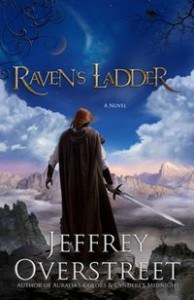
Jeffrey Overstreet has done it again. Raven’s Ladder, the third installment in The Auralia Thread, is another tale full of twists and turns that will keep you delightfully off-balance, but also reflective. Since fiction is often a more able and accurate mirror of reality, the grittier nature of this volume challenges you on a personal level, while also making astute cultural observations. As with Auralia’s Colors and Cyndere’s Midnight, Raven’s Ladder has that depth of quality that gives you the sense that there is more to this story than first meets the eye, inviting you to read it again. In keeping true to form, the tantalizing ending leaves you guessing as to how the threads of this adventure will be woven together at last in the final book, The Ale Boy’s Feast.
A Taste for Imagination and Maturity
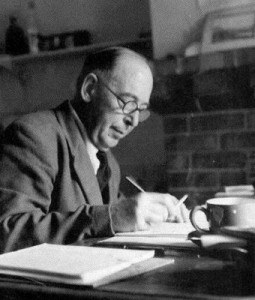
Posted this quote as a note on Facebook last year. However, having just come across it again, it is has left a fresh impression.
“It is usual to speak in a playfully apologetic tone about one’s adult enjoyment of what are called ‘children’s books’. I think the convention a silly one. No book is really worth reading at the age of ten which is not equally (and often far more) worth reading at the age of fifty – except, of course, books of information. The only imaginative works we ought to grow out of are those which it would have been better not to have read at all. A mature palate will probably not much care for creme de menthe: but it ought still to enjoy bread and butter and honey.” – C.S. Lewis, On Stories
A Rambling Review: The Princess and the Frog
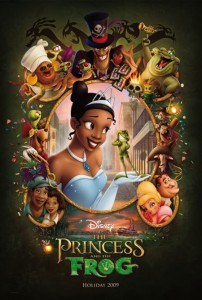
After reading and hearing various reviews, yesterday I made my way to the $1.50 Theater to see Disney’s “The Princess and the Frog.” I have to admit that I went in expecting not to really care for the movie, and came away pleasantly surprised. It is a good story told well, and has enough plot twists to keep it from being predictable.
Parents should be well aware that the villain, Dr. Facilier (whose name is a clever derivation from the word facile, meaning “easily accomplished or attained,” or “shallow”) is a dark and sinister character, who calls upon his “friends on the other side.” These friends, manifest as voodoo heads and shadowy sprits, can be quite frightening for younger children, and is primarily why it will be a few years before my boys see this movie (the oldest is six). While some parents may be upset by the clear references to the occult, however, there isn’t any doubt that they are evil. Granted, Dr. Facilier’s initial singing performance is quite catchy and impressive, but that only adds to the lesson to be learned that sometimes evil can be very appealing (fitting perfectly with the temptation scene taking place). In the end Dr. Facilier reaps what he sows, and his demise (another darkly intense scene) is a profound picture of what happens to those who attempt to befriend and manipulate evil. To put it simply, the bad guy is really bad, and to have that clear demarcation in the story was oddly refreshing since so many movies attempt to blur the lines between good and evil.
Tiana, the heroine of the story, is worthy of emulation. Raised in a loving home by her father and mother, she is taught the importance of a good work ethic, but not to the exclusion of what matters more: love and family. Her development as a character comes to its climax when she realizes that she had forgotten her father’s instruction, and is able to overcome Dr. Facilier’s temptation as a result.
There are a number of other interesting images throughout the movie: light overcoming darkness; sacrificial death and love (evidenced even in the shallowest of characters); and a scene in which a star named “Evangeline” (which means “gospel”) is thanked by Naveen (the prince turned frog) for saving his life.
Perhaps one of the most interesting scenes is with Mama Odie in the middle of the swamp. Dressed in white (so you know she’s good), this blind, voodoo magician plays more the part of a Pentecostal (snake-handling?) preacher who challenges Tiana and Naveen to “Dig a Little Deeper” to discern between what they want and what they really need. While neither of them is able to correctly answer at the time, their growing relationship and influence on one another enables each of them to answer that question when it matters most. (Naveen’s rolling up his sleeve toward the end of the movie is a nice touch along these lines, too.)
The music doesn’t rise to the level of “The Little Mermaid” or “Beauty & the Beast,” but the jazz style is fun and quite fitting to the New Orleans setting. Also, clever one-liners and animation make for some subtle humor that adults are more likely to catch and enjoy. I do find it interesting that Caucasians are represented rather negatively throughout, even though the stereotypes are not completely unfounded. On the whole, The Princess and the Frog is an enjoyable movie that easily provides a number of proverbial discussion points with (older) kids.
Off the Shelf: Phantastes
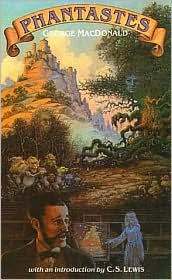
In an effort to become better acquainted with the writings of George MacDonald, I decided to read his Phantastes, a work highly acclaimed by C.S. Lewis. I have to confess it was not what I was expecting, nor, shall I say, always an “enjoyable” read. At times the story felt quite cumbersome, and beyond my intellectual capabilities, but I could never dismiss Lewis’ words of praise. So on I trudged, and I am glad that I did. I will not pretend to have a thorough grasp of this work, because I do not. Nor do I think it is possible to really be able to comprehend MacDonald’s imagery simply after one reading. No, it is too dense for that. For all that was difficult, however, the overwhelming conclusion that I came to was that I need to read it again. Not necessarily tomorrow, mind you, but at a later time when I feel up for the challenge of a reflective fantasy, and can, perhaps, more greatly appreciate MacDonald’s genius.
That being said, I did notice a number of themes and patterns that emerged, and wish I had caught them sooner. Perhaps earlier awareness would have made the opaque sections clearer, but proving that out will have to await a second reading. So, what were some impressions?
- The prominence of mirrors and reflection. This is something I wish I had picked up on sooner, but for about the last 100 pages MacDonald made frequent use of this imagery.
- Anodos, the main character, goes through a number of “water ordeals” that almost have a baptismal/cleansing imagery about them.
- This is a “coming of age” story in many respects, and arguably of one coming to age through faith in Christ (based on the ending, which I will not disclose).
- Related to the point just mentioned, I almost wonder if MacDonald didn’t have Spenser’s The Fairie Queene in mind as he wrote his story; in the sense that Anodos meets and is apprenticed by the Red Cross Knight.
- White is a very prominent color in the story, and there is an interesting Passover imagery (red marks on the door) later on that is significant.
- There seems to be a recapitulation of the story within the story that MacDonald uses to provide the reader with clues about where his story is going, and its overall purpose.
Readily admitting my limited observations, I would gladly welcome further insights on this work If you have some, please share them.
Off the Shelf: North! or Be Eaten
 Last night our family finished North! or Be Eaten, by Andrew Peterson. What an adventure! It is the second installment in “The Wingfeather Saga,” and has a very different feel from the first book in the series, On the Edge of the Dark Sea of Darkness. While enjoyable in its own right, Dark Sea bears the weight of setting the stage for the saga, and may not overly impress readers the first time through. However, it is well worth it in order to continue the story in North! Mr. Peterson’s weaving of the tale keeps readers on the edge of their seat throughout the entire book, making it hard to stop – even pushing back bedtime for our two boys on quite a few nights as a result. The development of the characters, and the reader’s ability to connect with them is a mark of the depth of Mr. Peterson’s story-telling abilities, and has one family eagerly anticipating the next chapter in the adventure.
Last night our family finished North! or Be Eaten, by Andrew Peterson. What an adventure! It is the second installment in “The Wingfeather Saga,” and has a very different feel from the first book in the series, On the Edge of the Dark Sea of Darkness. While enjoyable in its own right, Dark Sea bears the weight of setting the stage for the saga, and may not overly impress readers the first time through. However, it is well worth it in order to continue the story in North! Mr. Peterson’s weaving of the tale keeps readers on the edge of their seat throughout the entire book, making it hard to stop – even pushing back bedtime for our two boys on quite a few nights as a result. The development of the characters, and the reader’s ability to connect with them is a mark of the depth of Mr. Peterson’s story-telling abilities, and has one family eagerly anticipating the next chapter in the adventure.
Saints or Sinners?
“To the sinners who are in Ephesus, and are faithful in Christ Jesus….” That’s not how Paul begins his letter to the Ephesian churches, is it? No, it is not. He does not address his epistle “to the sinners in Ephesus,” but to “the saints who are in Ephesus.” And that being the case, how might that be instructive to pastors in speaking to their congregations?
Now, as a pastor, I realize that the church is full of sinners (being one of those sinners myself), and this excursus is by no means an attempt to soft peddle sin as not being a big deal. Sin is a big deal, and it is never to be treated lightly. However, how might Paul’s addressing the Ephesians churches in this way teach pastors about the disposition they ought to have toward those they are called to shepherd? Does he view them first as saints? Or as sinners? Based on Paul’s example here, and virtually every epistle he wrote, the overwhelming evidence is to view the church as comprised of saints.
At first glance, this might appear to be a splitting of hairs or an unnecessary distinction, but let us consider for a few moments what the implications might be of each perspective. First, if my fundamental view of the church is that it is full of sinners, then what are my expectations going to be of the congregation? What is my default thinking going to be? I am going to expect problems, and view people as the source of potential problems, won’t I? However, if I view the congregation as saints, then (hopefully) I am viewing them as a redeemed people, a people with a new identity in Christ. Isn’t that also how Paul argues in his letters? Doesn’t he first remind the people of who they are in Christ, and then address their sin and shortcomings?
Consider Paul’s argumentation in Colossians. In 3:1-4, he writes, If then you have been raised with Christ, seek the things that are above, where Christ is, seated at the right hand of God. 2 Set your minds on things that are above, not on things that are on earth. 3For you have died, and your life is hidden with Christ in God. 4When Christ who is your life appears, then you also will appear with him in glory. That is where he begins.
Then, in 3:5-10, he exhorts them, Put to death therefore what is earthly in you: sexual immorality, impurity, passion, evil desire, and covetousness, which is idolatry. 6 On account of these the wrath of God is coming. 7 In these you too once walked, when you were living in them. 8But now you must put them all away: anger, wrath, malice, slander, and obscene talk from your mouth. 9 Do not lie to one another, seeing that you have put off the old self with its practices 10and have put on the new self, which is being renewed in knowledge after the image of its (ESV).
So, again, the perspective of viewing the congregation fundamentally as saints does not neglect addressing sin. Rather, it gives even more weight to the exhortation of living according to the renewed image in Christ.
By way of analogy, how should a father view his children? As little sinners who are a constant project and source of irritation? Or as those in whom he takes pleasure and cares for? These two dispositions will result in very different environments in the home. The latter disposition does not negate discipline, but actually creates an environment in which discipline can thrive. Likewise, in the church, when the pastor views the congregation first and foremost according to who they are in Christ, he is going to speak to them (particularly in his preaching) from that vantage point. This is Paul’s example, and, as it is followed, may it result in the same as the apostle desired: a people who more fully understand their identity in Christ; a people who know themselves to be saints.